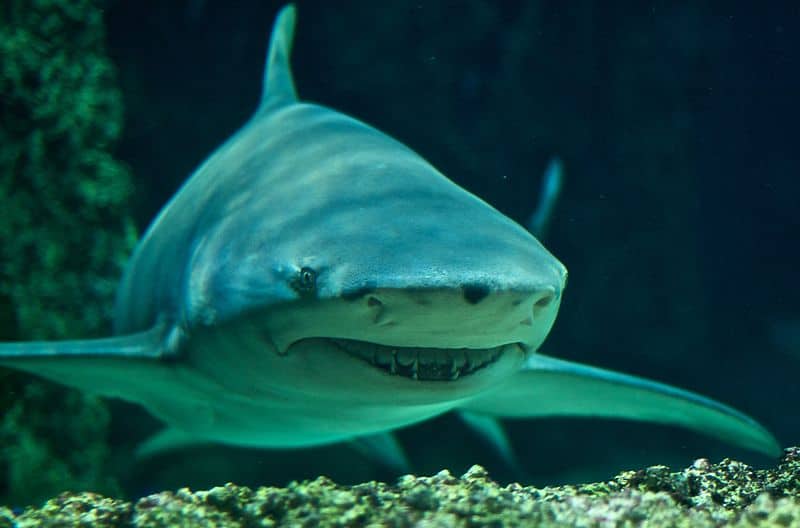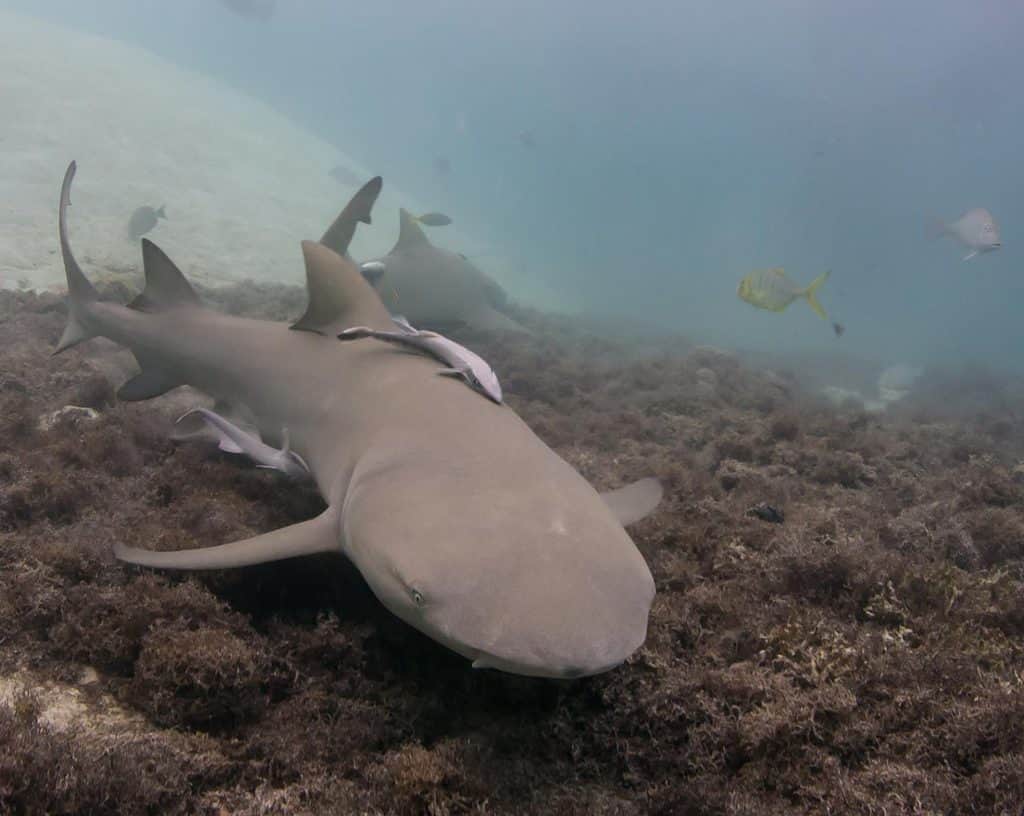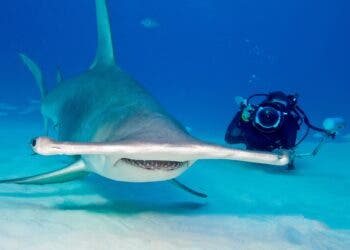They like to spend their time in the warm and shallow waters of the Atlantic and Pacific Oceans, hunting fish, crustaceans, mollusks, and even other sharks. Whether hunting alone or in packs, the lemon shark is a fearsome predator with a distinctive yellow hue. Despite being one of the most studied sharks, the lemon shark still has quite a few secrets — here’s what we know about these remarkable hunters.

What the lemon sharks are like
Ever heard of lemon sharks before? They’re not a new dessert craze, and they’re not sour at all. The lemon Shark, also known as Negaprion brevirostris to biologists, is the best-known and most researched of all sharks — although given how elusive sharks are in general, this doesn’t really mean all that much.
The reason why we know so much about it is that, unlike most sharks, the lemon shark can manage living in captivity for extended periods of time. This means researchers can study them in aquariums, which is not the case for many other sharks.
Adults can grow up to 10 feet (3 meters) long and weigh as much as 420 pounds (190 kilograms). They have slender bodies with rounded snouts and large, almond-shaped eyes. Its distinctive yellow coloration is the result of yellow pigments in its skin, which help it blend in with the sandy or muddy bottoms of the shallow coastal waters it inhabits.
Marine biologists easily identify lemon sharks with three distinguishing features. Firstly, both its dorsal fins are triangular and close to the same size. Second, the shark’s snout is blunt and narrower than the width of its mouth. Lastly, the first dorsal fin originates behind the pectoral fins. Both the pectoral and pelvic fins are weakly falcate or hooked.
Like some other species of sharks, they can detect prey by sensing electrical changes in the water — a very useful trait, given how they mostly hunt during the night. The electroreceptors are concentrated in their head and detect electrical pulses. This enables them to track down and hunt different types of creatures, and on occasion, they’ll even eat birds and smaller sharks.
As mentioned, lemon sharks were given the name due to their unusual yellow-ish skin color. Since they occupy subtropical, shallow waters with reefs, mangroves, enclosed bays or river mouths, they spend time in the part of the ocean where sunlight reaches the bottom of the sea, which gives their somewhat unusual color a camouflage advantage. Because it is a bottom dweller, the shark tracks its prey by churning up the sand.
They have distinctive yellow/ brown or olive-gray coloration on the dorsal surface and pale yellowish-white color on the ventral side. It’s not exactly lemon-colored, but given how sharks usually look, it’s not hard to see why researchers call them lemon sharks.
It takes 6 years for the lemon shark to reach maturity and its median lifespan is 27 years. They are viviparous, which means that they give birth to live young rather than laying eggs. Their offspring take 12 months to reach full development and the spring and summer months are the usual times when the sharks give birth to 5 to 20 pups at a time.
A social predator
Lemon sharks also contradict the ‘lone hunter’ myth. They are social animals that may congregate in groups of up to 20 individuals during a feeding frenzy at dawn or dusk. Researchers studying them note that they form groups due to an active desire to be social rather than simple collaboration or an attraction to the same limited resources. The lemon shark also has a remarkable brain, comparable in its relative mass to that of mammals. This, along with observations carried out in the wild, suggests that they are able to develop complex social interactions and cooperate with other individuals.

A day in the life of a lemon shark
The broad daylight is their time for self-care as they rest on the seabed while waiting for small fishes to clean off parasites. This may seem like a day at the spa for the lemon shark but in reality, this takes up more energy than swimming as the shark needs to continually pump water over its gills to breathe.
Though they may prefer shallow coastal waters, they are known to venture into freshwater streams or migrate towards the deeper ocean. However, they never seem to travel very far into fresh water or into the deep oceans, and they migrate more during their migration periods, spending most of their time along the coastal shelves.
Still, they have a pretty big range overall.

This creature is commonly found inhabiting the waters of the Southeastern coast of the United States and the Gulf of Mexico but can also be found throughout the Caribbean and Southern Brazil. They have been found to migrate to places such as West Africa, especially during the summer months which is their period of migration.
Contrary to popular information, lemon sharks are not a threat to humans — in fact, we are more of a threat to them, as we’ll see briefly.
Global data shows only 10 unprovoked attacks by lemon sharks, all of which occurred in Florida and the Caribbean. They do not attack humans and as a result, they have been gaining attention because of the growing occurrence of divers and clubs offering swimming with shark experiences. Because it stays along continental and insular shelves, they are often easily spotted by swimmers or divers around docks, piers or cruises near the surface of offshore waters.
Species Threats

The lemon shark is listed as Vulnerable by biologists, which means the species is at a high risk of unnatural (human-caused) extinction unless rapid conservation interventions are carried out.
Sharks have long been under the threat of hunting because of their fins, which are used in traditional medicine and soup dishes and the lemon shark is no exception. Its populations in the western north Atlantic and the some parts of the Pacific Ocean are declining due to overfishing because of the increasing demand in the black market for meat used in shark fin soup, and skin for leather. The thickness of lemon shark skin makes it ideal for the production of leather. Additionally, because of their tame behavior and unique color, lemon sharks have been illegally sold as pets.
Due to all this, as well as overfishing, habitat destruction, and its slow rate of reproduction, the lemon shark is under great threat. Recent research has shown that even when they do survive traumatic events, evidence of trauma remains in their genetic material.
To date, conservation initiatives to protect lemon sharks have not yet fully taken hold. Research and monitoring of its population size, ecology, harvest trends, and livelihood use is urgently needed. Moreover, species management including harvest and trade policies are not yet in place but are vital for species recovery. Lastly, heightened education and awareness campaigns are needed to encourage people in conserving the lemon shark.
The lemon shark is a fascinating and mysterious predator of the sea — despite decades of study both in the wild and in captivity. With its distinctive yellow color and elusive behavior, it remains one of the most captivating species of shark. There is still much we don’t know about the lemon shark, and it is important that we continue to study and understand this magnificent creature, protecting it from the harm we are causing it.





